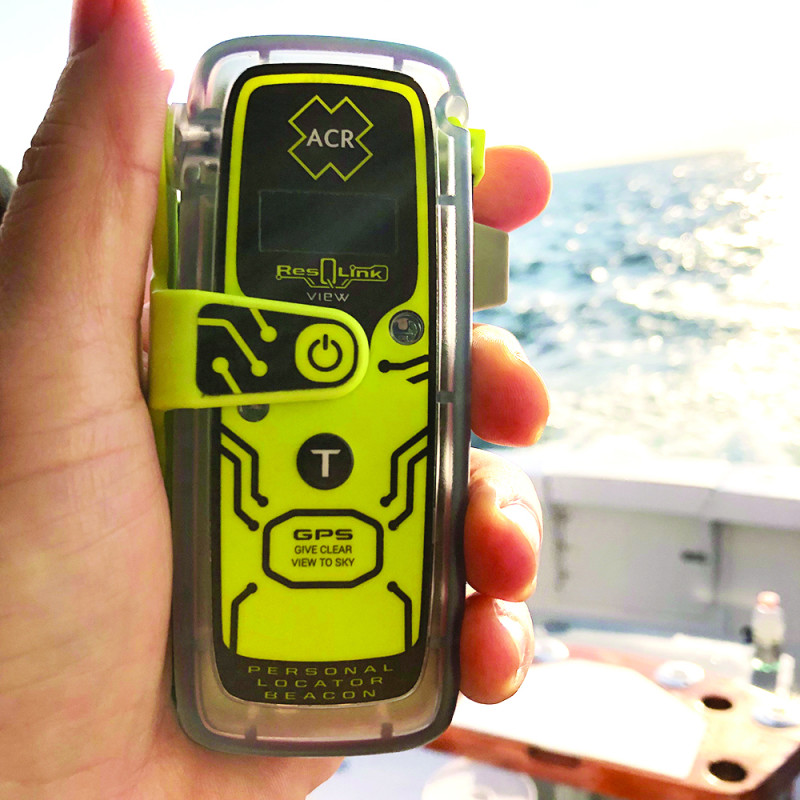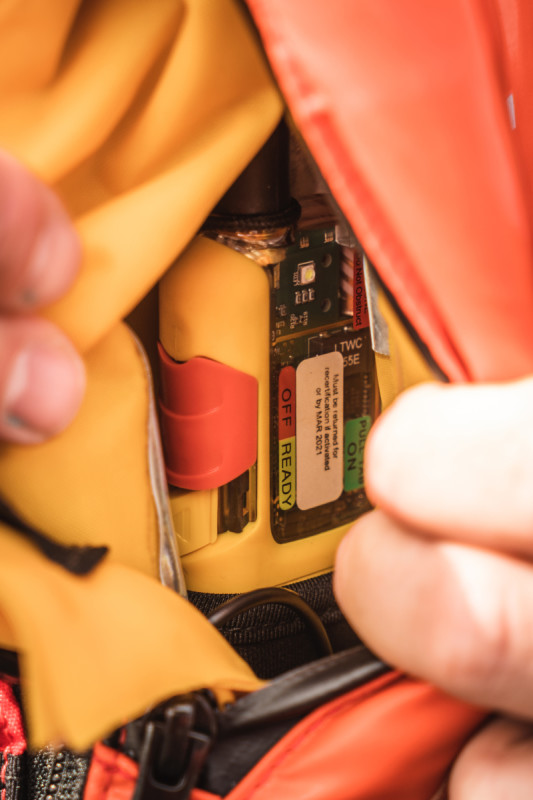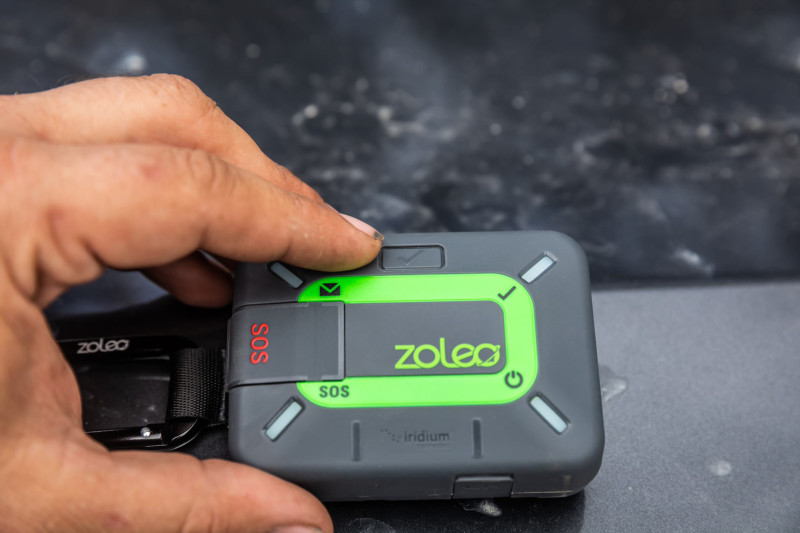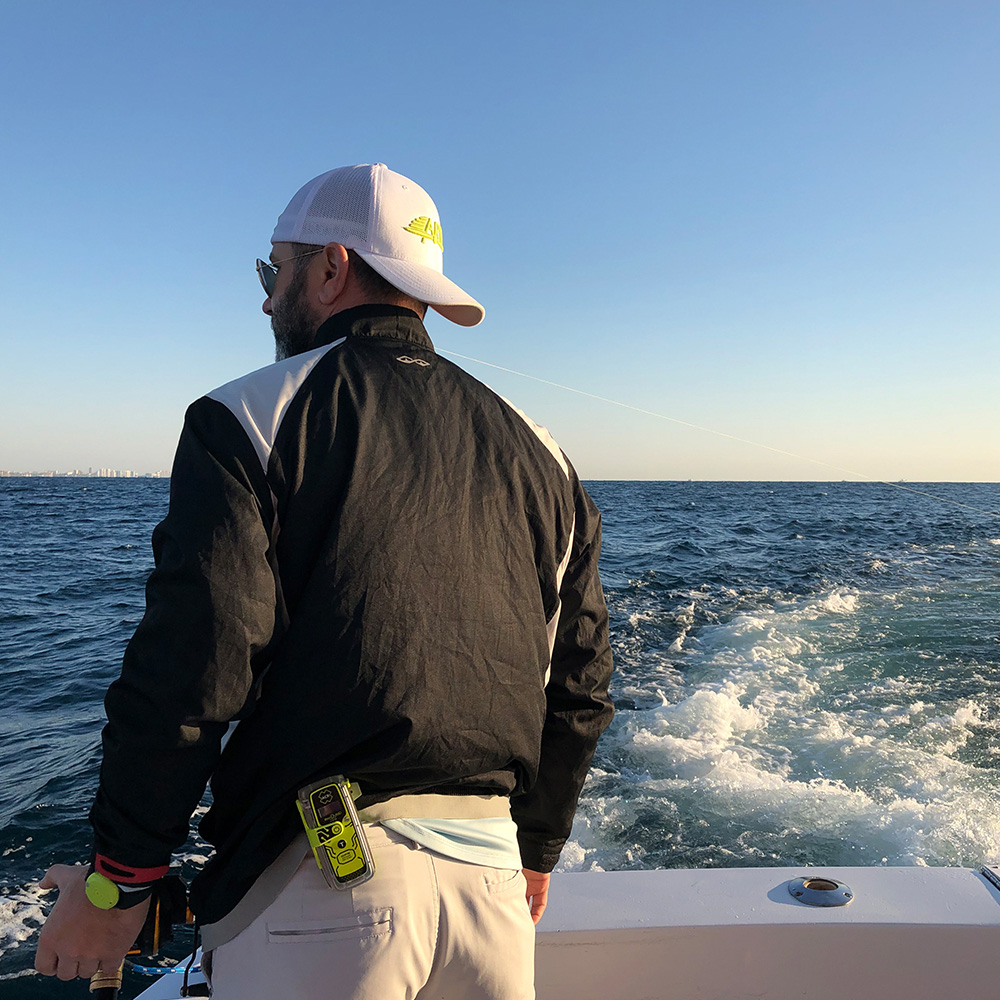In 1985, running before hurricane-force winds and 20-foot seas, I stood my wheel watch on a 58-foot eastern rig somewhere out on Georges Bank. Our course cut across the waves as we strove to get around Nantucket. The mate came up out of the fo’c’sle, waited for his chance, and ran aft to relieve himself. In just that moment a big wave swamped us. Green water rolled in over the bow and swept the deck from stem to stern. I looked out the wheelhouse door, and the mate was gone. I was about to holler for the skipper when I saw, in the open porthole at the back of the wheelhouse, eight fingers and eight very white knuckles.
It was a close call, but for many others falling overboard is a death sentence. It is the second most common way for commercial fishermen to die, after sinking. According to the U.S. Centers for Disease Control, 30 percent of fishing fatalities are from a man-overboard event. According to the CDC, in 60 percent of MOB events there are no witnesses, no one to throw a life ring or turn the boat around.
A number of companies around the world are addressing the problem with crew tags and personal location beacons. Among the leaders, ACR Artex of Fort Lauderdale, Fla., makes both a personal locator beacon and crew tag.
“We sell the PLB and the crew tag as a bundle,” says Mikele D’Arcangelo, vice president of global marketing at ACR. “They’re actually two different systems.” ACR’s flagship PLBs are the ResQLink 400 and the ResQLink view.
The company also sells the Ocean Signal 1.
“The Ocean Signal is the world’s smallest PLB, but it is not buoyant,” says D’Arcangelo, noting that the ResQLinks are buoyant, and all are no-subscription. “Ours will fit into a life jacket pocket or life raft and send a signal to the COSPAS-SARSAT satellite system.” COSPAS-SARSAT is an international, humanitarian satellite-based search-and-rescue system and service that can detect and locate transmissions from emergency beacons carried by ships, aircraft or people. It operates 24 hours a day, 365 days a year.
D’Arcangelo points out that the PLBs, by law, have to have a two-step activation system to prevent false alarms.
“They activate an international response,” he says. “If you’re in the water, you have to deploy the antenna and then push a button for three seconds. From that moment on, the device sends a signal every 52 seconds to the satellite. NOAA picks that up and diverts it to the Coast Guard, which has your beacon registration. They find the closet boat to you, it could be a tanker, and that boat goes to your position. The signal transfer from start to finish takes two minutes,” says D’Arcangelo. He adds that when registering a device, the user should take advantage of the box asking for additional information. “I recommend going in there and putting the details of your trip and any medical issues anyone onboard might have. So when a helicopter shows up, they have what they need.”
While PLBs may be more appropriate for abandoning ship and even onboard emergencies, ACR also sells its OLAS (overboard location alert system) crew tag, which sets off an alarm in a mobile phone or base station if the Bluetooth connection is broken.

“If someone goes overboard, you want to get them back as soon as possible,” says D’Arcangelo. “With OLAS, you buy the tag and download the app for free. You get all the tags to come close to the phone, and it links with them by Bluetooth. If someone goes overboard, Bluetooth hates water, the link is broken. The alarm goes off, and the phone’s GPS marks the spot.” D’Arcangelo notes that the phone app can link to six tags, while the base station can link to as many as 15. “We built the base station because we saw the phone as the weak link in the system.”
Other companies are making versions of the crew tag system. Weems & Plath makes the CrewWatcher, a similar but simpler system for one or two crew members. Mercury Marine makes a proximity-dependent engine kill switch called 1st Mate.
The PLB market is more competitive, with companies like the UK-based MRT and Australia’s GME making similarly priced devices.
MRT’s line of personal locator beacons, sMRT, have been designed to meet new international safety standards for range. They feature 121.5MHz, VHF DSC and AIS technologies.

“The sMRT V100 can be integrated into our sMRT Compact life jacket, which was designed by fishermen for fishermen,” says Josh Connelly of MRT’s sales department. “The sMRT V100 activates automatically when submerged in water. This means in a situation where the lifejacket does not inflate, the PLB will still activate and send distress signals.”
The SMRT V100 can also be manually activated. And unlike some other PLBs, it works on a local VHF signal that, according to Connelly, can reach as far as 75 miles in calm seas and around 10 miles in very high seas.
“We are also hoping to introduce a 406-MHz beacon, the sMRT Shield, that utilizes the MEOSAR satellite system and new introduction of Return Link Service, but the 406-MHz signal is not allowed to activate automatically. We believe the best chance for survival is a local signal. So the sMRT Shield includes both the 406 MHz and AIS for the best of both.”
At present, the MRT devices do not have a big presence in the U.S. market. “We’re in talks with our distributors to get a service center there. Some of our PLBs have to be serviced annually, and it’s a lot of trouble to send them to the UK. We were ready to get out there last year, but with the pandemic we couldn’t.” says Connelly.
The Australian company GME makes the MT410G personal locator beacon with integrated GPS receiver, a seven-year battery life, and seven-year warranty.
Featuring a high-intensity flashing LED strobe light, a non-hazmat battery pack for simple and cost-effective transportation and a 50 search channel GPS receiver with top mounted quad helix antenna to improve location accuracy to better than 100 meters.
Through the use of microprocessor technology, the MT410G is able to provide an affordable 406-MHz PLB solution.
While PLBs offer a subscription-free emergency location service, most satellite phones — like the Garmin InReach, Globalstar Spot and Zoleo satellite communicator — offer emergency features that include location.

“With a Zoleo, you get your position sent to emergency responders via satellite,” says Ron Wright, Zoleo rep. “But you can also send more information.” Wright points out that while the Zoleo satphone does not float, it is rated IP68 — water resistant at 1 meter for 30 minutes. While the satphones can be important for abandon-ship situations and emergencies, it would be unusual if they came in handy for an MOB situation.
Few fishermen plan to go overboard. Like the mate on that swordfish boat years ago, most get surprised. But with the risk always present and a 60 percent chance no one will see you go, a personal locator beacon could increase the chance of a rescue.







